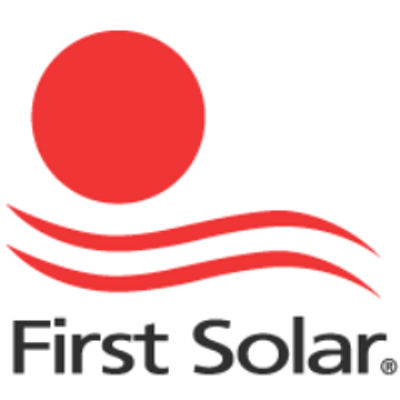第一太阳能公司 (FSLR.US) 2025年第三季度业绩电话会
文章语言:
简
繁
EN
Share
Minutes
原文
会议摘要
First Solar navigates contract terminations with BP affiliates, secures significant revenues, and invests in new domestic manufacturing capacity. Despite challenges, the company maintains a robust pipeline, revises financial guidance, and emphasizes commitment to innovation and responsible solar practices.
会议速览
First Solar's Q3 2025 earnings call highlighted record module sales of 5.3 GW, earnings of $4.24 per diluted share, and a gross cash increase to $2 billion. The company secured gross bookings of approximately 6.9 GW and terminated agreements worth 6.6 GW due to defaults. Manufacturing output reached 5.3 GW, with detailed financial results to be discussed by the CFO.
Production adjustments in response to demand shifts, aggressive enforcement of intellectual property rights, and continuous improvement in sustainability practices highlight the company's strategic priorities. Notable actions include initiating production at the Louisiana facility, filing to protect US Topcon patents, and achieving a gold rating in sustainability assessments.
Manufacturing faced temporary disruptions due to supply chain issues, impacting production capacity. Corrective actions have been taken, ensuring future supply stability. A new US production facility is planned to enhance domestic content, reduce tariffs, and improve margins, with an expected capacity of several gigawatts by 2027. This strategic move aligns with favorable US policies, aiming to provide pricing and timing certainty to customers, thereby strengthening the competitive position in the solar market.
Discusses recent trade policy impacts, including antidumping duties and investigations, on US solar imports, while highlighting strategic investments in US manufacturing and the evolving regulatory landscape in India that benefits domestic solar producers.
Discussed recent gross bookings, contract terminations with BP affiliates, and policy impacts on module sales. Highlighted strategic shifts in renewable investments, legal actions, and market constraints affecting contracted backlog.
The company reported robust pipeline opportunities, including 7.9 GW and mid to late stage bookings of 1 GW. Q3 financials highlighted 5.3 GW module sales, a 50% increase in net sales to $1.6 billion, driven by higher shipment volumes. However, gross margin decreased due to lower US module sales and production curtailments. A $65 million warranty liability was recorded, estimating future losses from manufacturing issues affecting Series 7 modules. Despite these challenges, earnings per share reached $4.24, reflecting strategic adjustments and operational focus.
Total cash, equivalents, and marketable securities reached 2 billion, up 0.8 billion from Q2, boosted by working capital, new bookings, and accelerated payments. Executed tax credit sales totaling 775 million, with payments due by year-end and Q1 2026, enhancing liquidity. Capital expenditures were 204 million, mainly for Louisiana facility, increasing net cash by 0.9 billion to 1.5 billion.
The company revises its financial guidance, accounting for the effects of international trade dynamics, contract terminations, and supply chain challenges. It outlines expected reductions in net sales and gross margins, increases in operating expenses, and the establishment of a new U.S. production facility. The guidance reflects a complex interplay of tariff recoveries, underutilization costs, and strategic capacity adjustments to navigate market uncertainties.
The dialogue focuses on strategies to rebook terminated volumes with BP, aiming for favorable pricing post-tariff announcements. It also discusses the limitations of fixed-price contracts regarding tariff adjustments and the company's commitment to enforcing contractual rights while exploring market opportunities.
Discussions revolve around achieving a balanced domestic content strategy, maintaining competitive pricing post-regulatory changes, and managing capital expenditures for expanding solar panel production capacity, emphasizing the importance of balancing international and domestic supply to optimize value and comply with new trade policies.
The dialogue discusses BP's defaulted contracts, emphasizing their non-cancelable nature and the company's pursuit of recovery through litigation. It clarifies the international and domestic split of contract obligations, highlighting the complexity of long-term agreements and the implications of defaulting on them.
Discussion centered on potential expansion of finishing lines, considering international sourcing and market demand, with focus on optimizing capacity and timing of investments.
The dialogue discusses pricing dynamics, with a focus on not reflecting current market conditions in the 4.1 GW of unbooked opportunities. It highlights satisfaction with current pricing and potential market tailwinds. Cash management strategies are outlined, emphasizing capital allocation for business operations, capacity expansion, and M&A, with potential capital returns if accretive deployment isn't possible. Future guidance on capital structure is anticipated.
Confidence in renewable energy commitments is challenged by industry trends, with multinational companies reassessing their dedication. European firms, in particular, are considering reducing their US market presence, impacting the pace of debookings and raising questions about future market dynamics.
Despite challenges and potential risks from project terminations and sponsor capital shifts, the energy sector remains confident in its contracted backlog due to positive policy environments, growing load profiles, and strong project economics, presenting significant market opportunities for partners and suppliers.
The Alabama factory is operating well, meeting throughput requirements despite challenges and supply disruptions. Louisiana is ahead of schedule with product qualification set for Q4. Quality assurance remains a top priority, with lessons from Series Ii incorporated into current manufacturing processes to maintain high standards.
The dialogue discusses the company's confidence in its contracts and legal standing, referencing past terminations and payments, and the strong legal position in New York for enforcing contract defaults.
Discusses the strategic reallocation of front-end manufacturing capacity from international facilities to support US finishing fabs, addressing concerns over under-absorption and potential market opportunities in Malaysia and Vietnam, while emphasizing negotiations for large-scale offtake agreements to optimize production and absorption.
要点回答
Q:What were the key highlights from Q3 2025?
A:The key highlights from Q3 2025 include gross bookings of approximately 10.2 GW at a base ASP of 30.9 cents per watt, termination of 6.6 GW of bookings under multi-year agreements, a record of 5.3 GW of module sales, Q3 earnings of $4.24 per diluted share, and gross cash increased to $2 billion.
Q:What manufacturing achievements and changes were mentioned?
A:Manufacturing achievements include producing 3.2 GW of modules in the third quarter, with 1.2 GW from US facilities and 2 GW from international operations. Changes include reduced production in Malaysia and Vietnam due to customer defaults, and capacity expansion initiatives at the Louisiana facility.
Q:What intellectual property actions were taken?
A:Intellectual property actions include separate filings requesting that the US Patent and Trademark Office deny petitions by affiliates of Canadian Solar, Cinco Solar, and Munda to invalidate US Topcon patents, referencing the acting director's view on the strength of patents based on their age.
Q:What is First Solar's progress with sustainability efforts?
A:First Solar's progress with sustainability efforts includes an Ohio facility earning a gold rating in the Responsible Business Alliance's validated assessment program, reflecting continuous improvement in sustainability and human rights performance.
Q:What updates are provided on domestic manufacturing and supply chain disruptions?
A:Updates on domestic manufacturing and supply chain disruptions indicate that while script of domestic glass suppliers faced disruptions limiting full capacity operations, impacting Q3 production by approximately hoodi gigawatts, corrective actions have been implemented. Production certificates are expected in Q4 for the Louisiana factory, and a new production facility in the US will be established to onshore the finishing of Series Xi modules, with a planned capacity of 4 GW starting in the last quarter of 2022 through the first half of 2027.
Q:How does the current policy landscape affect First Solar?
A:The current policy landscape affects First Solar positively as it remains generally favorable, with US trade and policy developments supporting the company's competitive differentiation through pricing and delivery certainty. The competitive advantage is emphasized in the US solar market due to the ability to provide domesticated supply chains and localized production capabilities, which are crucial for realizing tax benefits and mitigating risks associated with tariffs and project schedules.
Q:What trade and policy developments amplified competitive advantages for First Solar?
A:Trade and policy developments that amplified competitive advantages for First Solar include the US Court of International Trade ruling on the Biden administration's suspension of duties, the US International Trade Commission's affirmative determination in an antidumping and countervailing case, and the investigation initiated by US Customs and Border Protection against Huawei Solar. These developments have potential implications for duties on solar imports and continue to create headwinds for developers relying on Chinese supply chains, enhancing the value of First Solar's vertically integrated production capabilities.
Q:What are the notable policy changes in India since the last earnings call?
A:Notable policy changes in India include the increased application of tariffs for imports of finished modules and the progression of the country's renewable energy value chain towards including domestically made wafers. First Solar was automatically qualified in the recently announced List II, which is mandatory for solar OEMs to sell into key segments of the domestic market starting June 2026. These regulations are expected to strengthen First Solar's position in the Indian market.
Q:What could potentially increase the base ASP in the company's contracted backlog?
A:The base ASP in the company's contracted backlog could potentially increase contingent upon achieving specific milestones within their technology roadmap by the time of delivery.
Q:What action has First Solar taken against BP Solar and its affiliates?
A:First Solar has filed a lawsuit against BP Solar, its holding company LLD, and its affiliate Lightsource Renewable Energy Trading following their failure to cure multiple breaches of contractual obligations.
Q:How much module sales and net sales did First Solar recognize in the third quarter?
A:First Solar recognized 5.3 GW of module sales in the third quarter, including 2.5 GW from its US manufacturing facilities. The net sales totaled 1.6 billion, representing an increase of 0.5 billion compared to the prior quarter.
Q:What is the size of First Solar's total pipeline and mid to late-stage booking opportunities?
A:First Solar's total pipeline and mid to late-stage booking opportunities remain strong at 79.5 GW.
Q:What is the range of potential future losses First Solar is estimating for its manufacturing issues?
A:First Solar believes a reasonable estimate of potential future losses related to manufacturing issues will range from approximately 50 million to 90 million.
Q:What was the impact of the tax credit transfer agreements on First Solar's liquidity?
A:The tax credit transfer agreements executed by First Solar, totaling up to 775 million in tax credits, have highlighted the liquidity of the 45x credit market and strengthened the company's near-term liquidity to support its technology road map priorities.
Q:How did First Solar's capital expenditures and net cash position change in the third quarter?
A:First Solar's capital expenditures in the third quarter totaled 204 million, mainly driven by investments in the Louisiana facility. As a result, the net cash position increased by approximately 0.9 billion to 1.5 billion.
Q:What was the effect of the trade and policy environment on First Solar's operations and guidance?
A:The trade and policy environment influenced First Solar's operational decisions, shaped its strategy, impacted quarterly performance, and informed adjustments to forward guidance. The strategy included managing production to fulfill international commitments and actively pursuing tariff recoveries while temporarily curtailing capacity where recovery was unlikely.
Q:What are the implications of First Solar's decision to establish a new 3.7 GW U.S. production facility?
A:The implications of First Solar's decision to establish a new 3.7 GW U.S. production facility include approximately $370 million of total program direct spend, including $260 million of capital expenditures and $70 million of non-capital expenses. Additionally, there are forecasted incremental indirect charges of about $10 million in 2025. The company also continues to evaluate options for its remaining Malaysia and Vietnam facilities.
Q:How did the termination of contracts with BP affiliates impact the company's gross margin and future operating results?
A:The loss of gross margin assumed in 2025 from the termination of contracts with BP affiliates was largely offset by a termination payment recorded in Q3 and increased underutilization expenses due to reduced plant throughput with tail production. Given this termination of demand, the company incorporated the low end of its guidance range.
Q:What are the main factors that affected the company's guidance for potential restructuring charges and asset impairments?
A:The company's guidance did not include additional costs associated with potential restructuring charges or asset impairments that may impact future operating results.
Q:What are the updated expectations for gross margins, Section 45x tax credits, and ramp under utilization costs?
A:Gross margins are expected to be between $2.1 and $2.2 billion, representing approximately 42%. This includes estimated Section 45x tax credits ranging from $1.56 to $1.59 billion and ramp under utilization costs between $165 to $165 million.
Q:What is the new range for capital expenditures and expected year-end net cash balance?
A:Capital expenditures for 2025 are now expected to range between $0.9 and $1.2 billion. The year-end 2025 net cash balance is anticipated to be between $1.6 and $2.1 billion.
Q:What are the company's expectations regarding future pricing and fixed price contracts in light of the new tariffs?
A:The company is engaging in opportunities to find the right volume and timing for rebooking the terminated volume, aiming for prices close to $1.50 per watt. They continue to look at potential fixed price contracts and are cautious about the impact of revised tariffs. Existing contracts do not allow for revisions related to new tariffs and have clear obligations for both parties.
Q:What is the company's stance on existing contracts and obligations in light of the Section 232 tariffs?
A:The company takes the position that existing contracts are binding and do not account for new tariffs like Section 232. They intend to enforce their contractual rights and will not include such outcomes in pricing that was fixed at the time of the contracts. The company has the capacity through international operations to engage the market once the outcome of Section 232 is known.
Q:What is the company's strategy for potentially expanding its 3.7 GW finishing line capacity?
A:The company is evaluating the opportunity to bring more manufacturing into the US using existing international front-end capacity. They will reassess this once they understand the outcome of 2022 and have provided guidance for CapEx, with the potential to increase capacity if it aligns with their strategic goals.
Q:How does the company plan to utilize its finishing line and blend domestic and international content?
A:The company aims to keep the throughput of the finishing line balanced to maximize value, utilizing a blend of international and domestic content. This balance is thought to optimize the realization of value for the finishing line and align with production in Perry, which has a North Ridge capacity of about 1 GW as well.
Q:What are the financial details of the CapEx and non-CapEx spending plans?
A:Of the $260 million of direct CapEx spend mentioned, $26 million is forecasted for this year, with the remainder, $330 million, to be spent in 2026. The non-CapEx spend is about $70 million, which includes decommissioning costs, equipment rightsizing, and associated tariffs. Some of this incremental charge will occur in 2023, with severance for impacted associates in Southeast Asia also included.
Q:What percentage of the company's backlog was not in a take-or-pay structure and was therefore at risk of being canceled, as in the case of BP?
A:Approximately 20% of the company's backlog was not in a take-or-pay structure and was thus at risk of being canceled. This includes the 16% supported by nonrefundable deposits or termination fees, plus an additional 4% that was not in the take-or-pay bucket.
Q:How is the company recognizing revenue from the terminated BP contracts?
A:The company recognized revenue from the termination of the BP contracts through cash deposits received from BP, which are recognized as revenue. Additionally, some long-term credits (LCs) that were in accounts receivable were pulled as part of the settlement, and the residual amount, which includes parent guarantees, is being litigated to recover.
Q:How should the net mix of products be understood?
A:The net mix of products is mostly international at the front end of the supply period, transitioning into a larger portion being domestic as the timeline extends further into the future.
Q:What is the composition of the current year's supply?
A:The current year's supply is composed of a mix of products from both international and domestic sources.
Q:What is the status of the CapEx investment and the potential for adding new lines for finishing in the US?
A:The company is evaluating the potential for adding new finishing lines in the US, including potentially half the capacity of existing Ed finishing lines or new lines that could be Series 7. Decisions regarding timing and investment will be informed by various factors, including market opportunities and demand.
Q:Can you provide more information on pricing for the 4.1 GW of opportunities that are confirmed but not yet booked?
A:Pricing for the 4.1 GW of confirmed but unbooked opportunities is influenced by historical pricing, variable pricing dynamics with customers, and some contracts that are not yet fully secured. Market pricing is something the company is happy with and believes there could be tailwinds supporting a favorable pricing environment. The exact pricing is not reflected in current market pricing due to these dynamics.
Q:What is the company's strategy for managing cash and CapEx investments?
A:The company is continuing to evaluate potential for additional finishing lines and will make decisions based on capacity, module sales agreements, and working capital position. The strategy for managing cash and CapEx involves assessing opportunities for further investments and aligning them with the company's overall framework for capital deployment, which includes considering accretive deployment and capital return as needed.
Q:What is the likelihood and risk profile associated with the 54,000.5 GW of contracted backlog?
A:The likelihood and risk profile associated with the 54,000.5 GW of contracted backlog involve potential changes in commitment to renewables by large oil and gas multinational companies like BP, as well as other grid operators re-evaluating their US market commitments. The risk profile includes potential customer-specific terminations and project-related challenges such as permit issues. There's also a risk if sponsors decide to go in a different direction, but despite these challenges, the company remains optimistic due to the positive policy environment, growth in grid demand, and strong project economics.
Q:How is the ramp-up of DRT in Alabama and the impact of a disrupted glass supply chain?
A:The ramp-up of DRT in Alabama has been going well, although it has faced its own set of challenges and disruptions in the glass supply chain that have impacted factory throughput. The factory is currently at a good level, meeting its throughput requirements despite the challenges indicated in the prepared remarks.
Q:What is the current status of product qualification in Louisiana?
A:The product qualification in Louisiana is going extremely well, with the process being ahead of schedule and set to be completed in Q4, after which the company will start shipping the product.
Q:How is product quality being managed and what changes were implemented in the manufacturing process?
A:Product quality is being managed by being very diligent during manufacturing and ensuring a high level of field performance through accelerated life testing and field deployment. Changes were implemented in the Alabama and Louisiana organizations based on the key learnings from the initial launch of Series II and necessary adjustments to the manufacturing process.
Q:Has the company faced precedent setting litigation against customers with similar breaches of contract?
A:The company has not directly provided a precedent for successful litigation against a customer in a similar breach of contract but has mentioned the strength of their contracts and the belief that there are consequences for defaults. They have also discussed the general approach to contract terminations and the payment obligations which have been honored by the majority of counterparties.
Q:What is the company's view on the structure and enforceability of their contracts?
A:The company is very positive about the structure and enforceability of their contracts, supported by past experiences and input from outside counsel. They believe that the contracts are strong and are optimistic about their legal standing, especially in the state of New York, where similar contract conditions have been upheld by the courts.
Q:How is the company planning to address the absorption of Malaysia and Vietnam capacity in the US?
A:The company is utilizing the international facilities' front-end capacity to fund operations in the US, which will lead to good absorption for the front-end manufacturing. They have also made headcount reductions to minimize back-end processing and are bringing tools used in back-end processing into the US for absorption against finishing processes. Negotiations are ongoing for offtake agreements to structure deals for large customers with significant requirements.
Q:What is the current status of contracted backlog for Series Hood International?
A:The company has a contracted backlog of approximately gigawatts for Series Hood International, indicating that they have some runway in terms of volume and absorption for their production assets.

First Solar, Inc.
Follow





